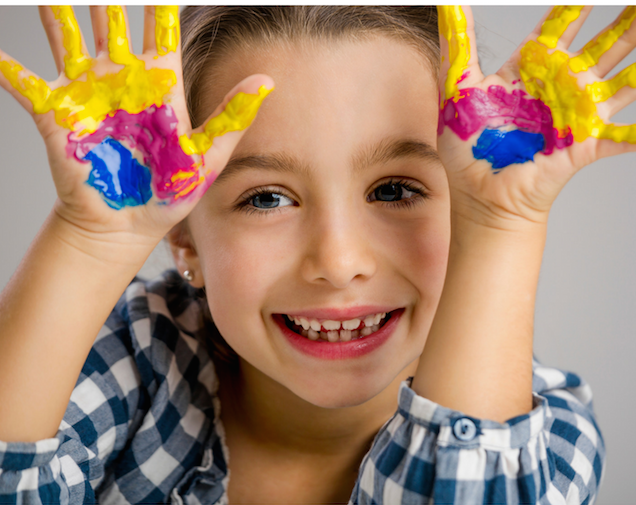
by pam | Jul 23, 2020 | Change, Coping with Change, Dealing with Anxiety, Dealing with Uncertainty, LeadinginUncertainTimes, Uncertainty, Women in Business
COVID-19 has certainly put us all in touch with what it’s like to live with uncertainty. It has given us the opportunity to reflect on what uncertainty means to us, how we typically respond to it, and to unearth lessons from the past to support us during such challenging times.
What is uncertainty? To me uncertainty arises when change comes to us “out of the blue” or is imposed on us by someone or something that is outside of our control.
The Cambridge English dictionary defines uncertainty as: “a situation in which something is not known, or something that is not known for certain” and “the feeling of not being sure what will happen in the future” (https://dictionary.cambridge.org).
Uncertainty means different things to different people. I invite you to take a few minutes to think about your responses to the following questions. You may wish to journal about them.
How do you define uncertainty?
When you think about uncertainty what words or feelings come up for you?
I invite you to rate yourself on a scale from 1 to 10 in relation to how you typically respond to uncertainty; 1 being “scares me to death” and 10 being “I thrive on it.”
What have you learned from past experiences with uncertainty that you can apply to your experience during these challenging times? What life experiences have prepared you to be less anxious and less stressed during this pandemic?
What I’ve noticed about myself, friends, colleagues and clients is that those of us who have had previous experiences with uncertainty and processed them positively, have coped better with the current situation than those who have not.
Here are a few examples:
Living and working in conflict zones and environments with restricted movement:
I’ve had the opportunity to live and work in places like Afghanistan, Pakistan and Nigeria. In Afghanistan I was driven to work every day in a bullet proof vehicle by an armed Afghan driver. We were followed by a “soft skin” vehicle with 3 Afghans holding AK- 47s. The first week I was rather “taken aback” by all of the military presence, but soon I relaxed and realized that “came with the territory”. Each day I didn’t know whether our vehicle would be pulled over by the police and be questioned about our papers and then taken to a nearby police station, or not. I lived in a state of constant uncertainty.
One day I was sitting in the rose garden of the Ministry of Public Health where I was working and having lunch with one of my female team members. All of sudden there was a huge explosion. A number of suicide bombers had attacked the military hospital across the road from the Ministry and killed numerous Afghan medical students, patients and their families. Immediately I received a text from my Head of Security advising me to stay where I was and that a vehicle would come for me soon/when it was safe to do so.
I lived in a small compound with 2 large houses and a small building that housed our guards and drivers. The compound was surrounded by high walls and barbed wire. There were 3 men with AK-47s guarding the inside our walls at all times. I had to sign a waiver and commit to not walking in the street or outside of the compound due the security situation. Sometimes after work I would walk in circles inside the small compound as I so craved exercise and being in nature. Thankfully, we did have a small rose garden on the property.
How did I deal with the uncertainty of living and working in a conflict zone? Here are some strategies I found helpful:
- Did yoga every morning before heading out to work (sometimes with a colleague and sometimes on my own)
- Skyped with my Sweetie almost every morning; connected with someone I cared about who also cared about me
- Grounded myself every morning before heading to work
- Worked out in the on-site gym on a regular basis
- Often listened to music
- Surrounded myself with beauty; e.g. created a bedroom that had some beautiful local art including several small carpets and a water-color painting I purchased locally
- Started a gratitude journal and wrote down at least 3 things I was grateful for at the end of every day; Also journaled regularly about my feelings and experiences
- When I noticed some anxiety coming up, I took three deep breaths in through my nose and out through my mouth (releasing oxytocin, the hormone that relaxes your body and helps you feel at peace)
- Almost every Thursday night, I connected with my colleagues; other technical advisors and consultants who were working on various projects with the Afghan government. We considered this our weekend as Friday was prayer day and the only day we had off every week. We sometimes had a bonfire, roasted marshmallows; often we sang to the guitar music played by one of my colleagues. Sometimes we danced. We laughed and shared experiences together. Sometimes we drank a bit too much!
What I learned from these experiences was that I could live with uncertainty. I found that rarely was I anxious. I learned that I could live in a contained environment and still be happy, focused and do good work. I also learned some coping strategies that I can now apply to future times of uncertainty.
Over to you. What past experiences with uncertainty can support you during this challenging time? It may be that you were laid off from a job you loved “out of the blue”. It could be that a partner one day told you they no longer loved you and had found someone else.
If you have chosen to move and lived in many places or changed your work or career a number of times, this may also have made you more flexible and able to cope with uncertainty and change. Whereas, if you’ve worked for the same company for 30 years or lived in the same town you were born in, you may have more challenges dealing with uncertainty.
What I know to be true is that it is not enough to have had challenging and uncertain life and work experiences. We need to have processed them in a positive way. A helpful framework and tool to do this is my 5-step “Art of Change” Framework. Using this tool, you identify a change or uncertain situation you want to work on and where you are on your “transition journey”. You then do the work associated with the phase of the transition journey you are in; such as letting go of negative emotions, beliefs or behaviors that are no longer serving you, envisioning how you would like your life or work to look and feel like and then taking action to make it happen. This framework is underpinned by the belief that “embracing change (and uncertainty) is a creative process that opens us up to new possibilities”. To learn more, you may access “The Art of Change Framework” at: https://pamela-thompson.com/.
I believe that times of intense change and uncertainty provide us with the opportunity to learn more about ourselves, to dream big dreams and create new possibilities.
What previous experiences with uncertainty have helped you cope during this time? What tools or strategies have you found helpful to deal with uncertainty? I invite your comments below.

by pam | Jun 24, 2020 | Creative Living, Dealing with Anxiety, Dealing with Stress, Dealing with Uncertainty, Health & Wellbeing, Leadership
Due to the uncertain and stressful times we are currently living in, and also because of research I’ve recently read on the importance of a “playful frame of mind” as we evolve as authentic leaders[1], I decided to resurrect and share an article I wrote three years ago[2]. …
Many of us learn that after a certain age, it is not appropriate to play. We get messages that we need to become serious and act like an adult. More and more research has shown how important play and laughter are for health and wellness throughout our lives.
You may have heard that laughter is the best medicine. When we laugh, we release endorphins and encourage energy to move throughout our body. In the words of Candace Pert, a neuroscientist and pharmacologist who has spent much of her scientific life studying the mind-body link:
Play and laughter are vital to feeling good. Recreation isn’t merely a frivolous addition to life or a hard-earned reward for work…I believe that in a society driven by a strong work ethic, with so many individuals burdened with workaholism, people aren’t getting enough endorphinergic surges through the bodymind on a regular basis. For you to not be laughing and playing during some part of every day is unnatural and goes against your fundamental biochemistry.
Everything You Need to Feel Go(o)d), 2006
Stuart Brown, founder of the National Institute for Play, has conducted research that shows play is not only energizing and fun, but also important for human physical, emotional and cognitive development, and intelligence. Addictions, depression, stress-related illnesses and interpersonal violence have been linked to the prolonged deprivation of play –http://www.nifplay.org . Brown’s TED talk outlines different types of play and provides evidence of the importance of play throughout our lives –http://www.ted.com/talks/stuart_brown_says_play_is_more_than_fun_it_s_vital.html
Based on research by Brown, Pert and others, it is recommended for the health of our minds and bodies that we engage in play and laughter every day.
Types of Play
Research on animals and humans has identified a number of different types of play including:
- Body Play – when we move our bodies in different ways; for example, jumping, running, skipping or moving our bodies to real or imagined music.
- Object Play – when we make an object (e.g. a snowball) and play with it, or play with an object such as a soccer ball.
- Imaginative Play – creating an imaginary friend you interact with (you may have had an imaginary friend when you were a child); creating and sharing a fantasy story with a child; playing “dress up”.
- Social Play – playing tag or playing house with others
- Transformative Play – through digital and other types of “structured” play we learn creative problem-solving.
Strategies for Incorporating more play and laughter
- Travel back in time and identify and write down types of play activities you enjoyed and engaged in as a child.
- Reflect on how many of these activities you currently engage in as an adult and how often you engage in them.
- Rate on a scale of 1 to 10 how energized each of the above activities makes you feel – 1 being “not at all” and 10 being “full of energy”.
- Identify several play activities you would like to begin integrating into your life. Experiment and notice how they make you feel.
- Commit to engaging in some form of play and/or laughter on a daily basis. Ask friends and family for support (perhaps make it a family project to laugh and play at least once a day), and encourage play and laughter in their lives as well.
Your Inner Child
Another way to incorporate more play and laughter into your life is to connect with your inner child. According to Wikipedia “our inner child is our childlike aspect. It includes all that we learned and experienced as children, before puberty.” Others say that your inner child is your “true self” … the small child within you that never grew up. Your inner child is naturally fun, playful, and creative. It is also fragile and vulnerable.
Many of us have buried or rejected our inner child, and it takes some time to reconnect with and nurture it. The process may be challenging and scary for some, especially if you’ve experienced trauma. Connecting with our inner child helps us love, accept and nurture ourselves.
Strategies for Connecting with Your Inner Child[3] [4]
- Write a letter to your inner child saying that you want to reconnect. It can be a letter of apology or one expressing that you want to strengthen the relationship with her.
- Notice and acknowledge the feelings that come up when you connect with your inner child. Rather than “pushing them down” or rejecting them, allow any fears, sadness or insecurities to surface. Notice what you notice.
- Express those feelings by writing them down in a personal journal or through painting, finger painting or drawing.
- Picture yourself as a 3, 4 or 5 year old and reassure your younger self that they are safe, secure and loved.
- Reorganize your living space. Make it more fun. Bring out joyful childhood pictures, stuffed animals and trinkets and put them on your mantle. Paint one or several of your rooms with guidance from your inner child.
- Buy a coloring book and color several times a week.
- Spend time with children playing children’s games. These could be “hide and seek”, or imaginary games, and creating and telling your own stories.
- On awakening everyday ask your inner child what fun activity they would like to engage in today.
Parting Thoughts
Research shows that bringing our inner child out to play and incorporating laughter and play into our days is essential to be healthy and happy throughout our lives. I encourage you to try some of the strategies and to notice what you notice.
I’d love to hear how you connect with your inner child and what you’ve noticed from that experience. Please share your experiences below so we can all learn and grow from each other.
[1] https://hbr.org/2015/01/the-authenticity-paradox
[2] Originally published in the February 2017 issue of Eydis Authentic Living Magazine
[3] http://www.wikihow.com/Embrace-Your-Inner-Child
[4] http://www.creativecounseling101.com/find-your-inner-child.html

by PT-clc | Apr 24, 2018 | Conscious Living, Coping with Change, Dealing with Anxiety, Health & Wellbeing, Self-Care
Often when we’re facing a life change; it could be a job loss, retirement, separation, a health challenge; we feel anxious. Our heart begins to race and we feel like we want to run away from the situation. It is difficult to focus and often times we want to go back to the way things were. We feel overwhelmed by all that lies ahead of us, and are uncertain about our future.
When this happens, what can you do to get out of this cycle of anxiety?
Here are some proven strategies:
- Take slow deep breaths in through your nose and out through your mouth, keeping your mouth open and releasing sound when you exhale. Repeat this about five times and notice how you feel. This exercise releases oxytocin, the hormone that relaxes and calms us. When you have taken a few slow, deep, conscious breaths, you should begin to feel more relaxed.
- Do body scanning on awakening and/or before going to sleep. Lie in bed and scan your body slowly from the top of your head to the tips of your toes. While doing this notice any tension or pain. If you do, breathe into that area and set the intention to release the tension or pain.
- Spend regular time in nature. Find a special place you feel connected to. For me there is a place on the rocks by the ocean close to where I live. When I go there and lie on the rocks, I feel so grounded, relaxed and protected. Did you know that the Japanese have done longitudinal studies to show that when we walk among trees it reduces our heart rate, reduces our blood pressure and increases the number of natural killer cells our bodies produce?
- Do mindfulness walking meditations starting with three times a week for 20 to 30 minutes each time. When you do this, instead of going for a walk and thinking about all that has happened or all you have to do, instead focus on your senses. Notice the wind on your face, the smell of the salt sea air, the crunch of leaves underfoot, the sound of the birds, the beautiful vistas that surround you. When thoughts come into your head, which they inevitably will do, imagine they are clouds and let them float by or imagine putting them in a bubble and seeing them float away, and refocus on your senses.
- Repeat to yourself several times each day, “I am safe, it’s only change. “ (a favourite of mine from Louise Hay) Post this affirmation where you will see it, e.g. on the bathroom mirror, on the refrigerator door.
- Move your body. Put on some music you enjoy and dance around your kitchen or wherever. Feel the music and let it flow through you.
- Tap into and express your creative side. Do something creative that you enjoy. Perhaps it’s painting, drawing, playing the piano, gardening. It could be something you did as a child that you no longer do or something you’ve always wanted to try. When you tap into and express your creative side, you feel like a child at play, lighter and filled with wonder. This opens you up to exploring the positive side of the change you are experiencing, and to the belief that change is a creative process that opens us up to new possibilities.
I’d love to hear from you some strategies you’ve found helpful to reduce the anxiety associated with change. Feel free to post your comments below and to share this article with others.


